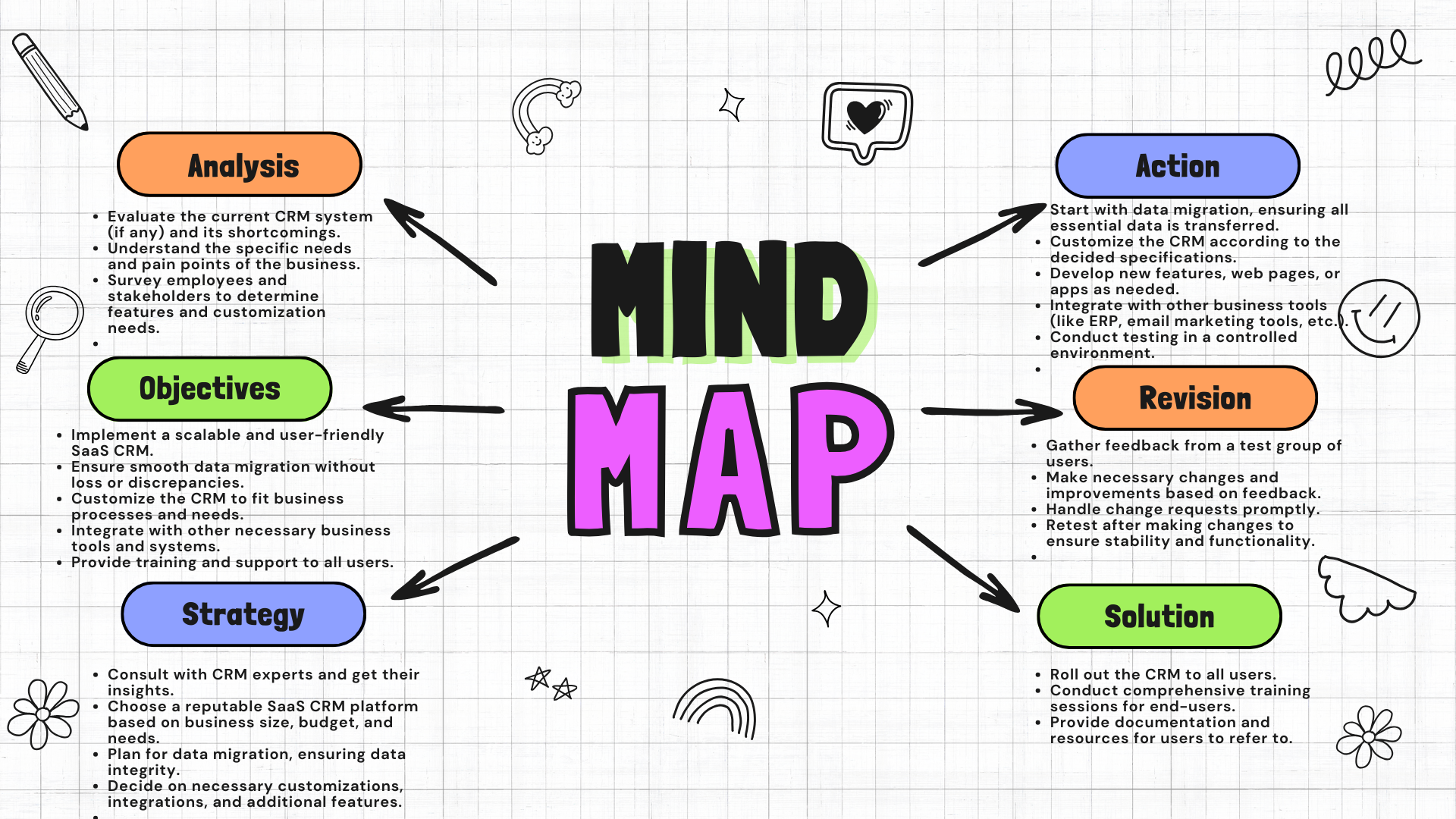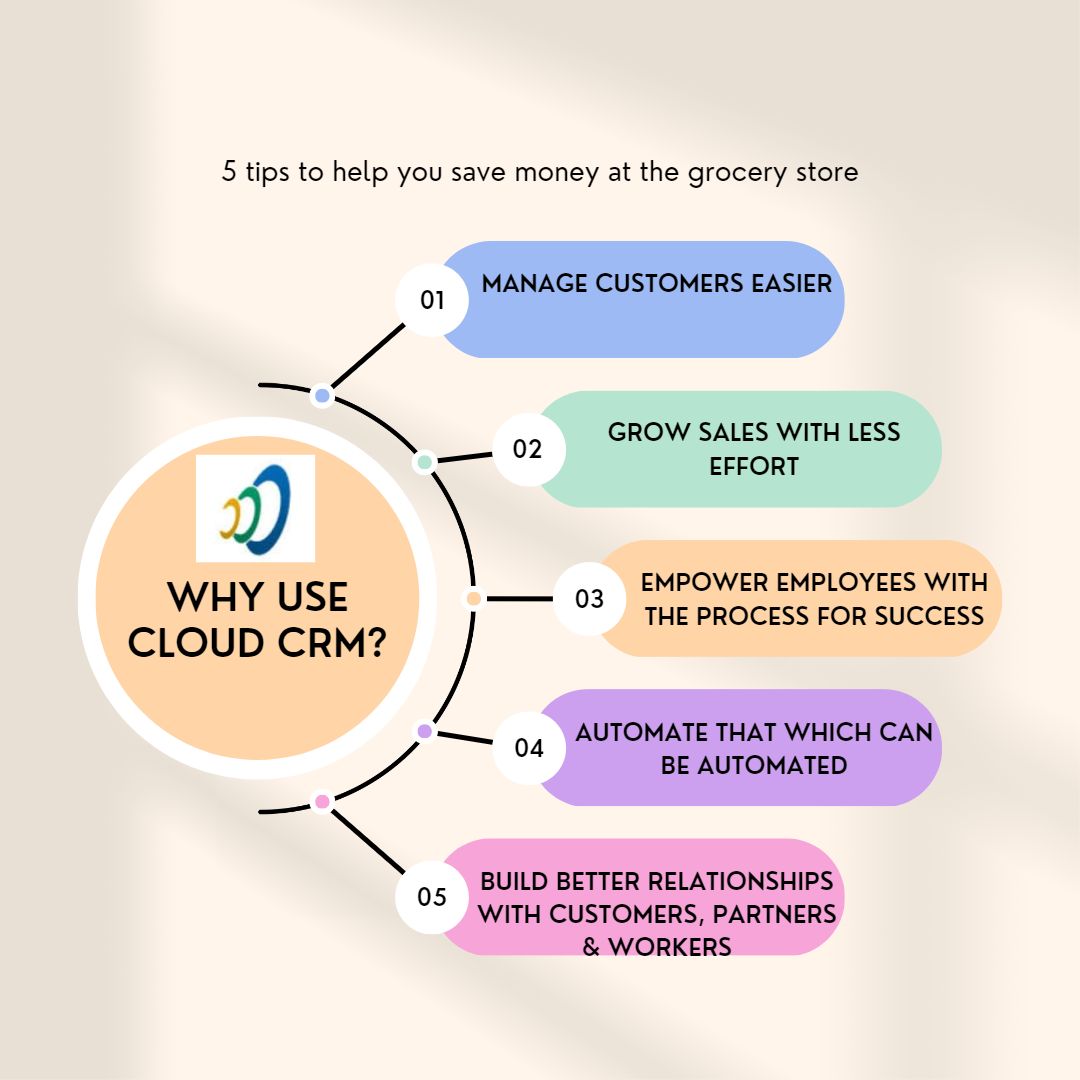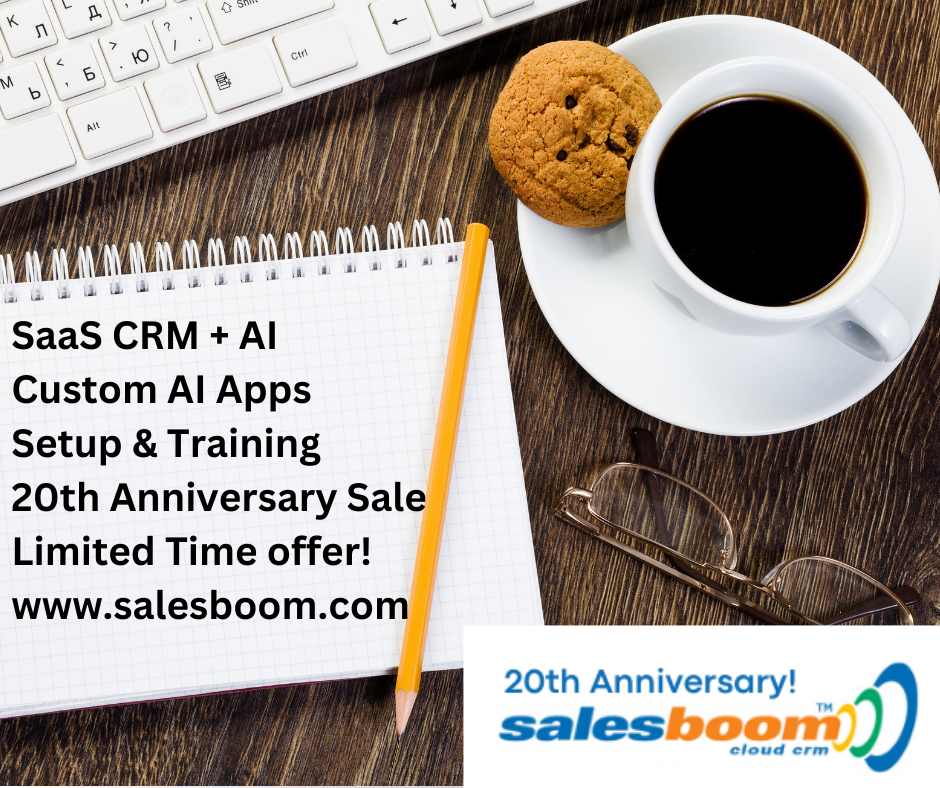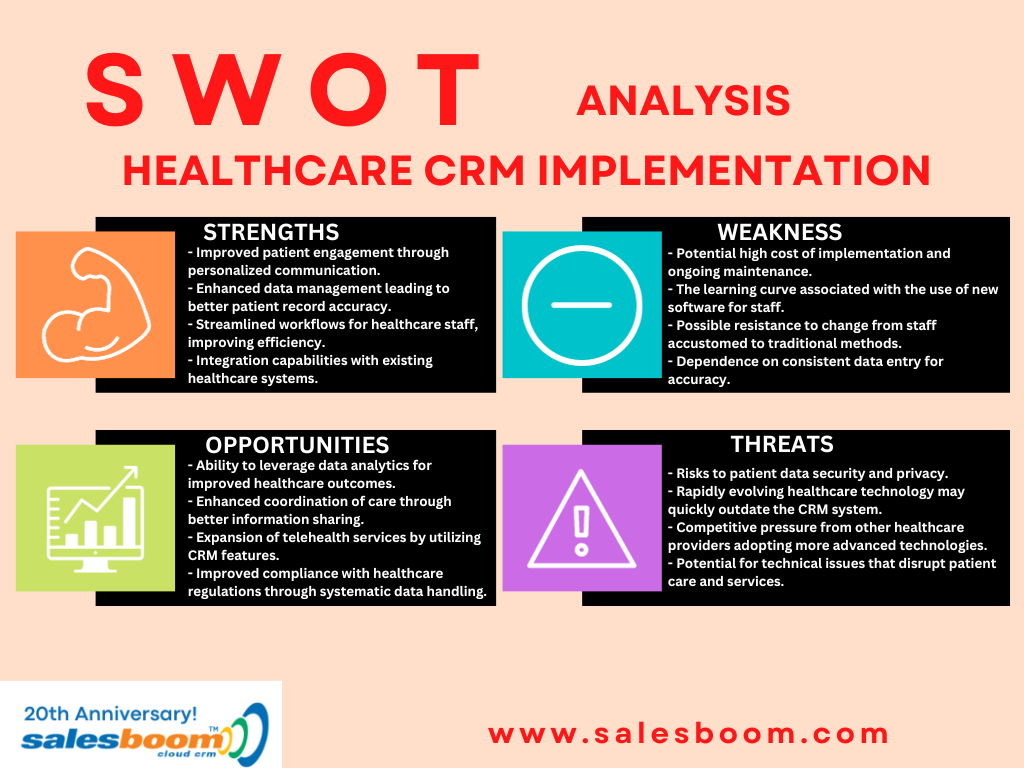Medical Equipment Supplier CRM SWOT analysis for CRM implementation
Content:
- Introduction
- Mastering Market Dynamics: CRM as a Game-Changer for Medical Equipment Suppliers
- What is a SWOT Analysis?
- Why Use a SWOT Analysis?
- Why conduct a SWOT Analysis when implementing CRM in Medical Equipment Supplier?
- Applying SWOT to CRM Implementation in Medical Equipment Suppliers:
- Following is an example SWOT Analysis for implementing a CRM In a Medical Device Supplier:
For medical equipment suppliers, integrating a CRM (Customer Relationship Management) system is not just a step towards technological advancement; it’s a strategic move toward better understanding and serving the healthcare market.
While the path involves navigating certain challenges, the benefits of enhanced customer relationships, improved operational efficiency, and market expansion opportunities are undeniable.

In a sector where staying ahead means staying informed, CRM is the tool that can bridge the gap between data and actionable insights.
Following is a comprehensive look at CRM implementation in the medical equipment supplier sector, including an explanation of SWOT analysis and its importance in strategic planning.
Mastering Market Dynamics: CRM as a Game-Changer for Medical Equipment Suppliers
In the competitive world of medical equipment supply, staying ahead means not only understanding the market but also mastering the art of customer relationship management (CRM).
But before we dive into how CRM can revolutionize this sector, let's explore the fundamentals of a strategic tool often used in planning: the SWOT analysis.
What is a SWOT Analysis?
-
What: SWOT stands for Strengths, Weaknesses, Opportunities, and Threats. It's a framework used to evaluate these four aspects of a business or project.
-
Who: It's used by business leaders, marketers, and strategists to assess internal and external factors that impact their operations.
-
When: Typically conducted during strategic planning or decision-making processes.
-
Where: Can be applied in various contexts, from small businesses to large corporations, across different industries.
-
Why: The purpose is to identify internal and external factors that are favorable and unfavorable to achieving an objective. It helps in strategy formulation by capitalizing on strengths and opportunities while mitigating weaknesses and threats.
Why Use a SWOT Analysis?
A SWOT analysis is crucial for strategic planning as it provides a clear and concise overview of the critical factors affecting a business.
It aids in identifying areas that need improvement, potential risks to be aware of, and opportunities that can be leveraged for growth.

Why conduct a SWOT Analysis when implementing CRM in Medical Equipment Supplier?
A SWOT analysis for CRM (Customer Relationship Management) implementation by medical equipment suppliers is effective for several reasons:
-
Strategic Insight: It provides a structured approach to assess the company’s internal strengths and weaknesses, as well as external opportunities and threats in the context of CRM implementation. This helps in making informed decisions that align with the company's strategic objectives.
-
Market Understanding: The analysis can uncover insights into the medical equipment market, helping suppliers understand where they stand against competitors and how a CRM can give them a competitive edge.
-
Customer Relationship Enhancement: By identifying strengths, the analysis can highlight how a CRM system could enhance relationships with healthcare providers, hospitals, and clinics, which is critical in the medical equipment field.
-
Operational Efficiency: The SWOT analysis can reveal internal process weaknesses where a CRM system could introduce improvements, such as inventory management, order processing, and customer feedback loops.
-
Risk Management: Identifying potential threats, such as emerging competitors or changing healthcare regulations, allows medical equipment suppliers to strategize how a CRM can mitigate these risks.
-
Technological Adaptation: It helps in assessing the readiness of the organization to adopt new technologies. A SWOT analysis can highlight gaps in technical skills or infrastructure that need to be addressed for successful CRM implementation.
-
Resource Allocation: By understanding the weaknesses and threats, resources can be allocated more effectively, ensuring that the CRM implementation addresses the most critical areas.
-
Long-term Planning: The opportunities section of the analysis can provide a vision for future growth and expansion, informing how the CRM can be scaled or adapted over time.
-
Compliance and Regulation: Especially important in the healthcare sector, a SWOT analysis can help ensure that the CRM implementation considers necessary compliance with healthcare regulations and data security standards.
-
Feedback and Improvement: It encourages continuous evaluation and feedback, fostering a culture of improvement and adaptation, which is vital in the ever-evolving medical equipment and healthcare sectors.
In essence, a SWOT analysis for CRM implementation in the medical equipment supply field is an invaluable tool for strategic planning, ensuring that the investment in CRM technology is well-aligned with the company's overall objectives, market conditions, and operational needs.
Applying SWOT to CRM Implementation in Medical Equipment Suppliers:
Strengths:
CRM systems in the medical equipment sector offer enhanced relationship management with healthcare providers, enabling suppliers to better understand and meet their clients' needs.
Efficient inventory management and data-driven decision-making are other strengths, allowing suppliers to maintain optimal stock levels and make informed choices about market strategies.
Weaknesses:
owever, challenges like high implementation costs and complex integration with existing systems cannot be overlooked.
Training employees to adeptly use CRM systems can also be a significant hurdle, especially for those not well-versed in technology.
Opportunities:
CRM opens doors to numerous opportunities, such as expansion into new markets and forming strategic partnerships.
Additionally, the integration of advanced technologies like AI and IoT within CRM systems can greatly enhance their functionality and efficiency.
Threats:
Suppliers must be aware of competitive pressures, ensuring their CRM strategies are robust enough to keep them ahead.
Data security and regulatory compliance are other critical concerns, necessitating strict protocols and continuous monitoring.

Following is an example SWOT Analysis for implementing a CRM In a Medical Device Supplier:
Strengths:
-
Improved Customer Relationship Management: CRM systems can enhance relationships with healthcare providers and clients by providing better communication, service, and follow-up.
-
Efficient Inventory Management: CRMs help in managing inventory more effectively, tracking sales, and forecasting demand to ensure adequate supply.
-
Enhanced Sales and Marketing Strategies: CRM tools can analyze market trends and customer preferences, aiding in the development of targeted marketing campaigns and sales strategies.
-
Data-Driven Decision Making: The ability to collect and analyze customer and sales data helps in making informed decisions about product development and market expansion.
Weaknesses:
-
High Implementation Costs: Setting up a comprehensive CRM system can be expensive, especially for small to medium-sized equipment suppliers.
-
Complex Integration with Existing Systems: Integrating CRM with existing inventory and sales systems can be challenging and may require significant customization.
-
Training and Adoption Challenges: Ensuring that all employees, particularly the sales and technical staff, are proficient in using the CRM system can be a time-consuming process.
Opportunities:
-
Expansion into New Markets: Effective use of CRM data can identify opportunities for expansion into new healthcare markets or geographic regions.
-
Partnership and Collaboration: CRM data can help in identifying potential partnerships with healthcare providers, research institutions, and other stakeholders.
-
Technology Advancements: Incorporating emerging technologies like AI for predictive analytics or IoT for equipment tracking can enhance the capabilities of CRM systems.
Threats:
-
Competitive Pressure: The medical equipment industry is highly competitive, and suppliers must continuously innovate and improve their CRM strategies to stay ahead.
-
Data Security Risks: Managing sensitive customer data requires robust security protocols to protect against breaches.
-
Regulatory Compliance: Ensuring compliance with healthcare industry regulations, including data protection laws, can be challenging and requires constant vigilance.
This SWOT analysis highlights the various aspects that medical equipment suppliers need to consider when implementing CRM systems.
The strengths and opportunities point towards improved management and growth potential, while the weaknesses and threats emphasize the need for careful planning in terms of technology integration, staff training, data security, and regulatory compliance.
Are you in the medical equipment supply industry and considering CRM integration? Share your experiences or thoughts in the comments.
if you’re looking for expert advice on effectively implementing CRM systems tailored to your business needs, our team is here to help. Contact us for a detailed consultation that aligns with your strategic goals.
